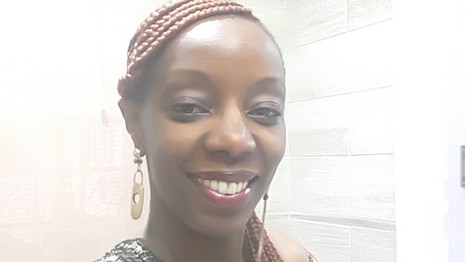- About
- Subscribe Now
- New York,
May 25, 2018

 Satta Matturi jewelry uses responsibly sourced diamonds and precious stones for its line of African-inspired earrings, cocktail rings, pendants and bangles. Image credit: Satta Matturi Fine Jewellery
Satta Matturi jewelry uses responsibly sourced diamonds and precious stones for its line of African-inspired earrings, cocktail rings, pendants and bangles. Image credit: Satta Matturi Fine Jewellery
The overall luxury market grew by 5 percent in 2017 to an estimated $1.4 trillion globally. Most luxury segments experienced positive growth. Within luxury, jewelry is ranked as one of the fastest-growing product categories, increasing by 10 percent, according to a Bain Winter 2017 report.
Diamonds have been revered and desired for centuries and are favored for weddings, as gifts and as heirlooms for several centuries. In 2016, De Beers stated in a report that the demand for diamond jewelry has increased globally to $180 billion in the same year.
Making the cut
Love for jewelry inspired Satta Matturi to create her brand, Satta Matturi Fine Jewellery, for the precious stones lover enthused by African facets. She is CEO and creative director of her eponymous brand, with a presence in Johannesburg, Lagos, Gaborone and London.
“I’m enthusiastic about diamonds and the art of jewelry,” Ms. Matturi said. “I struggled to find the sort of pieces that were appealing. This was a gap in Africa. Then I started creating my own pieces that resonated across age groups and cultures.
“Jewelry design started as my hobby with a collection of costume jewelry and it evolved slowly from there,” she said. “It was a great way to test some branding concepts as well as products, price points and understand the markets and consumers in-depth.”
 Satta Matturi is founder/CEO and creative director of Satta Matturi Fine Jewellery. Image credit: Satta Matturi Fine Jewellery
Satta Matturi is founder/CEO and creative director of Satta Matturi Fine Jewellery. Image credit: Satta Matturi Fine Jewellery
A dual British and Sierra Leone national, Ms. Matturi nurtured her diamond knowledge and skills as a key account manager at De Beers for 16 years before venturing to create her own brand as a rough diamond evaluator. Her business is by appointment only and she spends most of her time in Botswana and West Africa, with a base in the United Kingdom.
“At De Beers I acquired indispensable skills, insights and experience of the jewelry and diamond industry, globally,” Ms. Matturi said. “I learnt a lot about rough and polished diamonds and traveled to several cutting centers and consumer markets to meet manufacturers and jewelry designers.
“This knowledge gave me the foresight for my brand, Satta Matturi Fine Jewellery,” she said. “My designs are about Africa and they can be worn anytime. This is how I show the world about the wonderful treasures and legacies of the continent. That is the story of my pieces.”
Ms. Matturi’s first collection launched in 2016 with an ode to West Africa and the designs took the form of various different ceremonies, heritage and customs from the region. The collection celebrated women – irrespective of where they are from – and enabled women to identify with the pieces and their story.
“The kola earrings symbolize the kola nut, which is highly regarded across West Africa and is an integral part of significant life events such as weddings and the birth of a child,” Ms. Matturi said. “It is synonymous in many West African traditional gatherings and social rituals.
“I have portrayed the kola through a rose quartz stone and paved with diamonds,” she said. “Fascinatingly, my first pair of the kola earrings was purchased online by a lady in the U.S. who related with the kola. This was crossing over the African culture to the U.S. through jewelry.”
 Satta Matturi earrings in 18ct yellow gold, rose quartz and diamonds inspired by the kola nut native to the rainforests in West Africa. Image credit: Satta Matturi Fine Jewellery
Satta Matturi earrings in 18ct yellow gold, rose quartz and diamonds inspired by the kola nut native to the rainforests in West Africa. Image credit: Satta Matturi Fine Jewellery
The process of creating her pieces takes six months from concept to final product.
Ms. Matturi works with stones that have already been purchased or a readymade design.
The creation process involves inspiration, research, planning, drawings, testing prototypes, CAD designs and ethical sourcing of stones.
“All stones used are pre-polished from reputable suppliers who undertake best sourcing practices,” Ms. Matturi said.
“I conceptualize the designs and the collections then work with my designers to create a computer-generated image, which I refine and fine-tune,” she said. “The next step is to select the stones for the product and these can range from rubies, diamonds, to pearls or even sapphires. Diamonds are a main feature in my pieces.”
Sparkling market
De Beers, in a February report, stated that rough diamond sales totaled $665 million in its first sales cycle of the year, down when compared with 2017 but up from 2016. The $665 million – a provisional figure – includes diamonds sold both to sight-holders and via its auction platform.
“My clients are mostly self-purchasing women, both married and single women who are very successful and run their own businesses or work in senior management roles in corporates,” Ms. Matturi said. “They choose my designs as they are unique and limited, for exclusivity.
“There will always be a demand for jewelry,” she said. “However, we often have periods where the demand slows and jewelry is likely the first to be cut off the wish list, but I feel that the new millennial middle class shows a huge potential for growth.”
There are different factors that are influencing the purchase of jewelry globally.
One key factor is the women who are leading more companies and creating businesses globally. This has led to a larger group of financially independent women in the higher bracket who indulge constantly in luxury goods and services.
In Africa, there are certain markets that have been essential to Satta Matturi Fine Jewellery.
“The two markets that have matured quickly in regards to buying fine jewelry from boutique brands are Nigeria and South Africa,” Ms. Matturi said. “They are receptive to alternative brands.
“The U.K., U.S.A., Nigeria, South Africa and Angola are the main target markets, although our reach still needs to be stronger,” she said. “We would also like to see the brand expand into Francophone Africa and East Africa, which has huge potential.”
There are often three types of jewelry consumers: new money, emerging markets and young consumers.
In addition, there is an increase in the number of new jewelry designers in Africa, though there is a dearth of African designers in the fine jewelry space.
“The emerging markets have the kind of clients who drive sales for boutique jewelry businesses,” Ms. Matturi said. “They are traveled and are sophisticated. They desire to be different and are attracted to alternative emerging brands that deliver the same promise as a big name brand but unique and different way.
“I think there is a lot of potential and there are a lot of talented designers that I have met, but with fine jewelry a lot is required to bring a design or concept to market, and future designers in Africa need access to various valuable resources such as marketing knowledge, public relations, among other necessary aspects,” she said.
 Satta Matturi Endless Elegance long-rope necklace in 18ct Yellow/White Gold, rubellites, garnets, pearls and diamonds. Image credit: Satta Matturi Fine Jewellery
Satta Matturi Endless Elegance long-rope necklace in 18ct Yellow/White Gold, rubellites, garnets, pearls and diamonds. Image credit: Satta Matturi Fine Jewellery
THE INDUSTRY has several challenges for small business entrepreneurs, which include access to raw materials, fierce competition from global brands, and access to finance and industry knowledge.
Besides the challenges, the prospects are high for the sector.
According to Ms. Matturi, the African millennial and emerging middle class across the continent will define their own culture, which will influence their trends and buying habits toward unique and different brands.
 Maryanne Maina
Maryanne Maina
Maryanne Maina is a luxury communications consultant and journalist dividing her time between France, Kenya and Nigeria. Reach her at maryanne.maina@hec.edu.
Share your thoughts. Click here